Walking Through Welsh History in St Fagans
A walk around Wales from Celtic times to present day at St Fagans National History Museum
St Fagans National History Museum is one of Europe’s leading open-air museums and the most popular heritage attraction in Wales. The museum opened in 1948. Since then, over 40 original buildings from different historical eras have been moved to the site. The re-erected and restored buildings provide glimpses into the history of everyday Welsh life. I’d read about the museum before I visited, but I was still surprised by its size (over 100 acres), and impressed with the park-like setting.
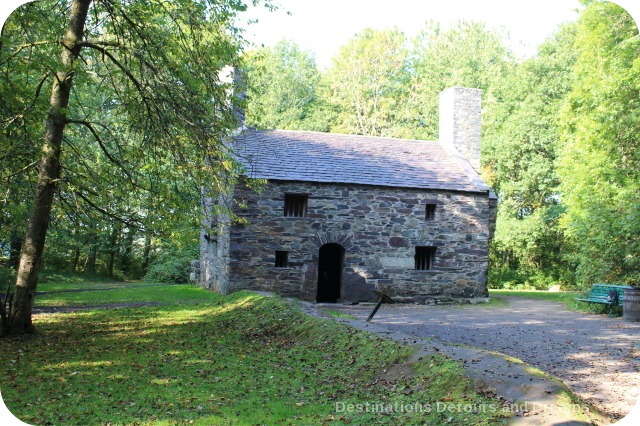
Garreg Fawr farmhouse from Waunfawr was built in 1544 in the Tudor period. Its original inhabitants would have been a wealthy farmer and his family. He likely raised Welsh Black cattle and sheep. The open moorland was unsuitable for crops other than rye and oats. The house was more comfortable than most of its time. The stone house with a chimney would have been a status symbol. But the furnishings would still have been plain.
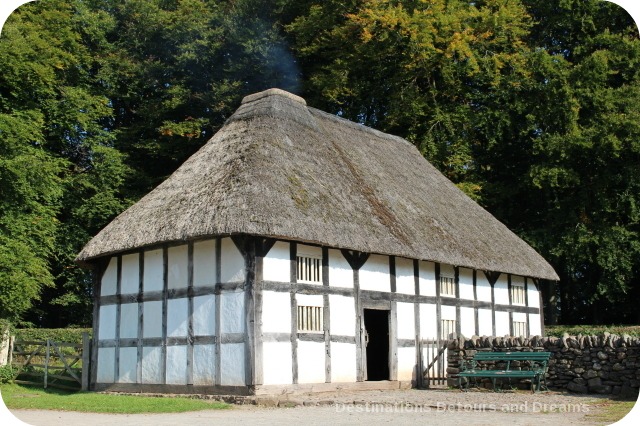
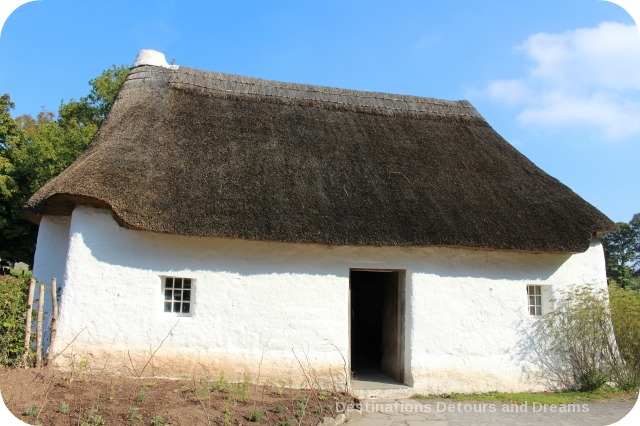
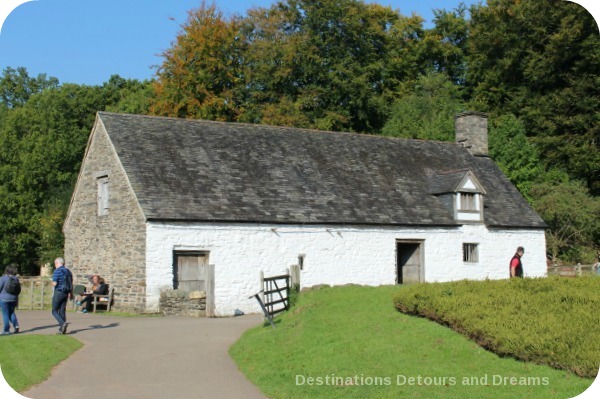
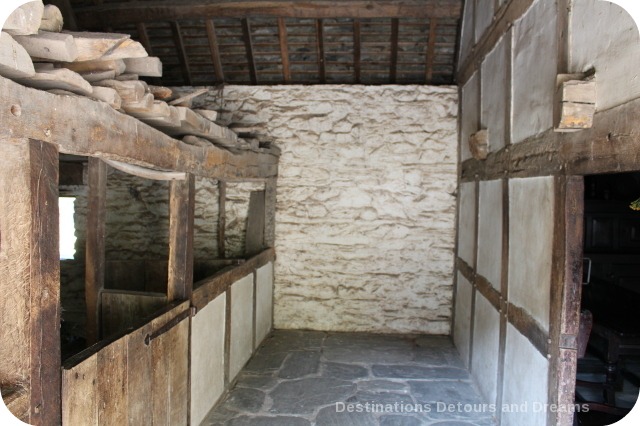
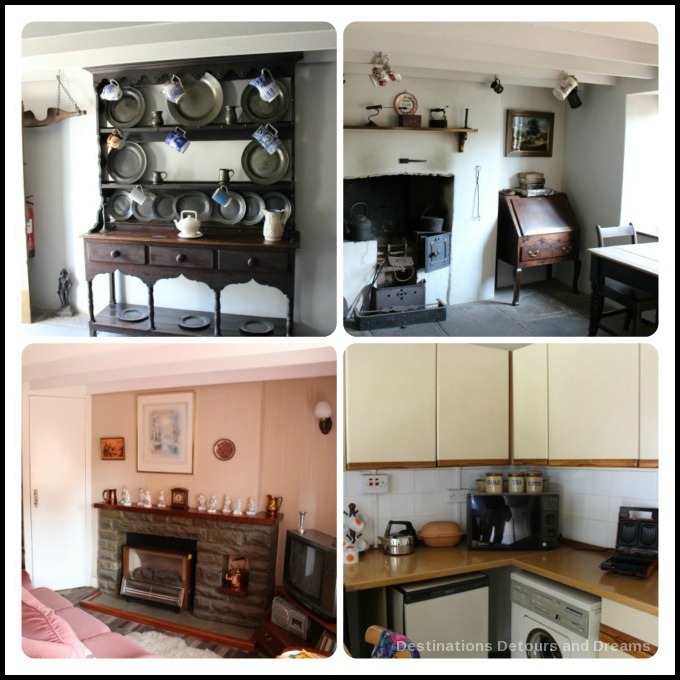
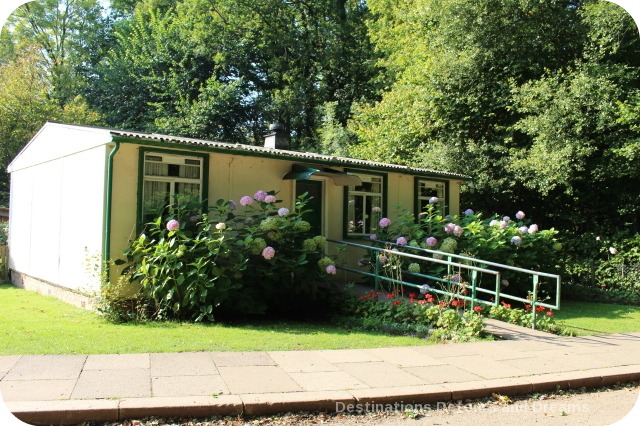
The houses and other buildings are spread out in a village-like setting. There are stores, a school, a tannery, a post office, churches, a Workmen’s Institute, a shoemaker’s shop, and a wool mill. Livestock are in the fields and farmyards. In workshops craftsmen demonstrate traditional skills.
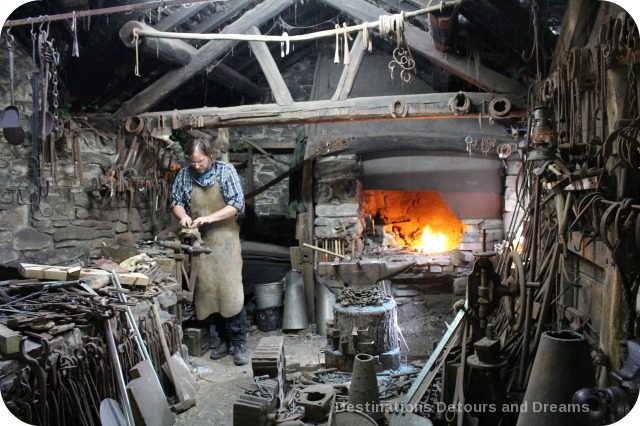
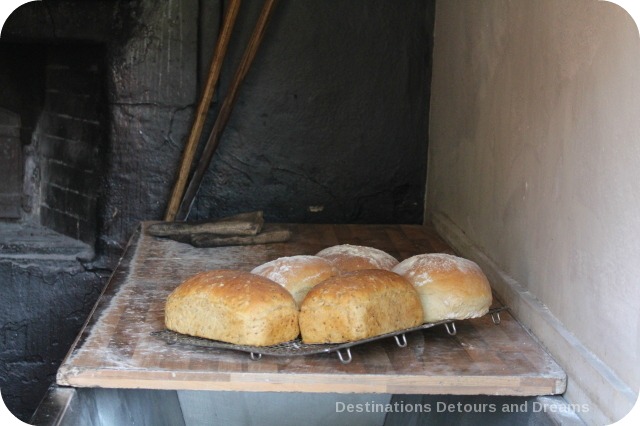
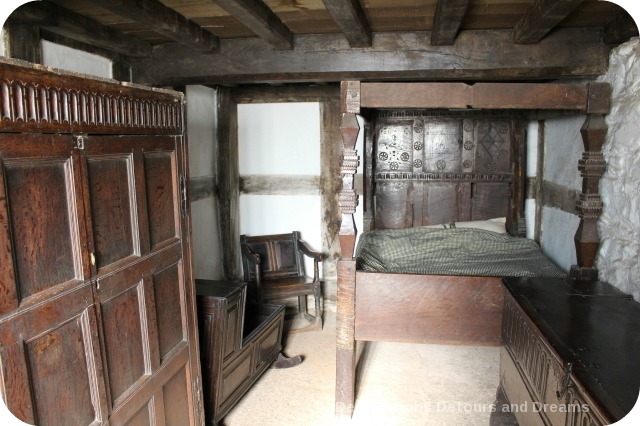
Placards outside each building provide details about the building. Museum staff are present inside to answer questions. The person working at Abernodwydd offered an explanation as to why the beds of that time were shorter than those of today. It was an explanation I’d not heard before. He said it was not because people were shorter, but because they slept partially upright. He said it made a lot of sense if you thought about it. The burning of coal and peat probably made it difficult to breathe when completely prone.
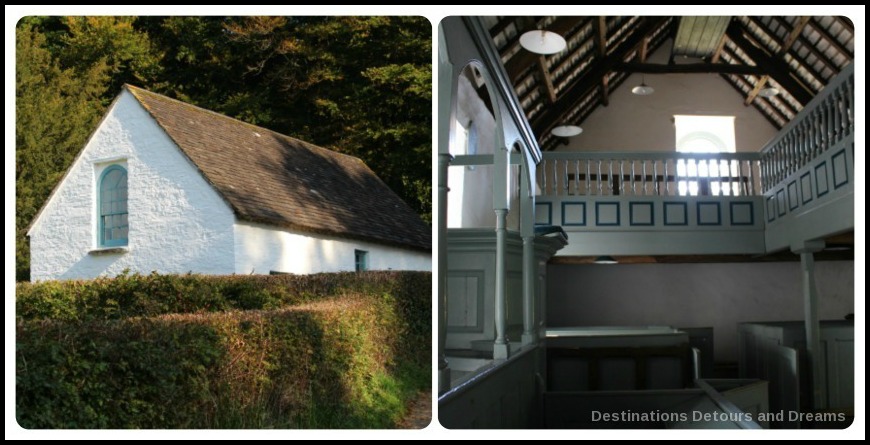
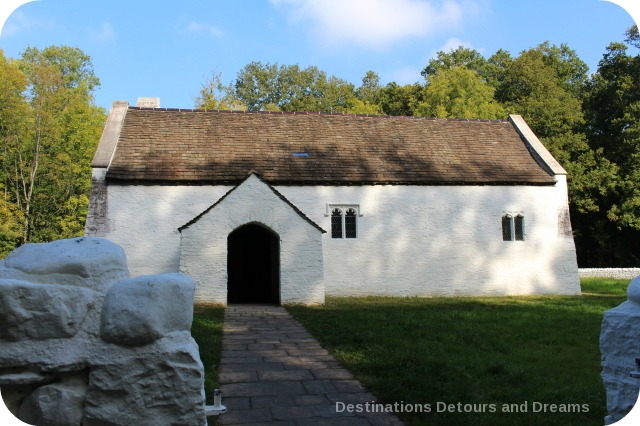
St. Teilo’s Church served the community of Pontarddulais for over 700 years. It ceased to be the parish church in 1850. By 1973 it was no longer a place of worship and was moved to St Fagans. During restoration, 500 years-old paintings were discovered under layers of limewash. The wall paintings inside the church today are copies made using medieval techniques. The church has been rebuilt to look as it would have in 1520.
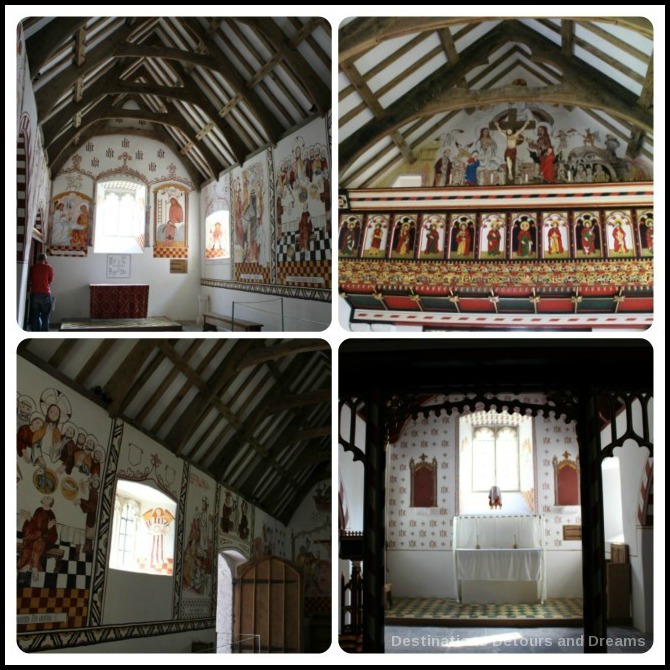
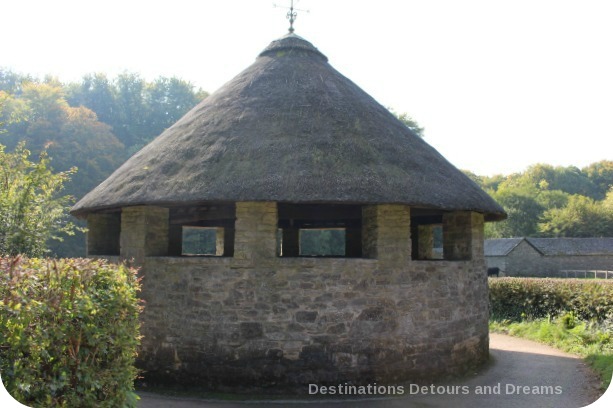
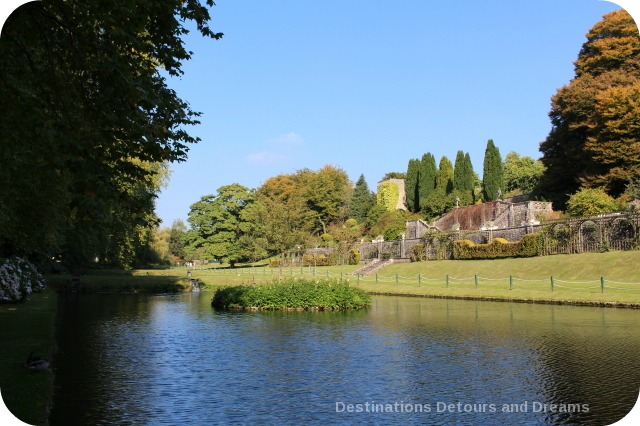
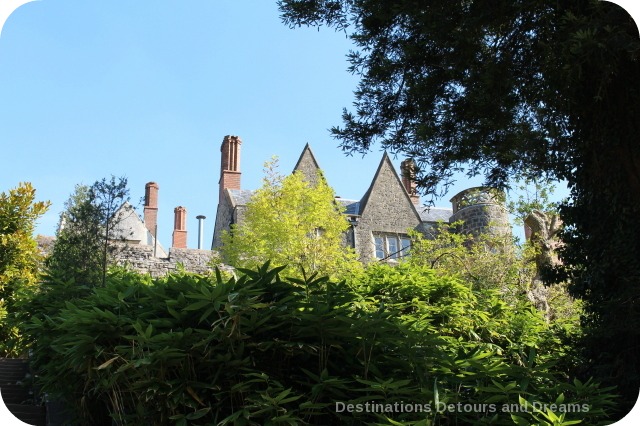
St. Fagans Castle was one of the finest Elizabethan manor houses in Wales and the focus of St Fagans village for 400 years. It was built in 1580. In 1946 the Castle and the park were given to the nation by its owner to create the National History Museum. The interior of the castle is open to the public. Many families lived in the castle over the centuries. The story told inside the museum is that of the Windsors, who, with their four children, spent summers here between 1885 and 1910. Pages and signs throughout the Castle provide information on the family and the furnishings. I found it particularly interesting that the butler ironed Lord Windsor’s newspaper every morning before the Lord received it, so his hands wouldn’t get covered in newsprint.
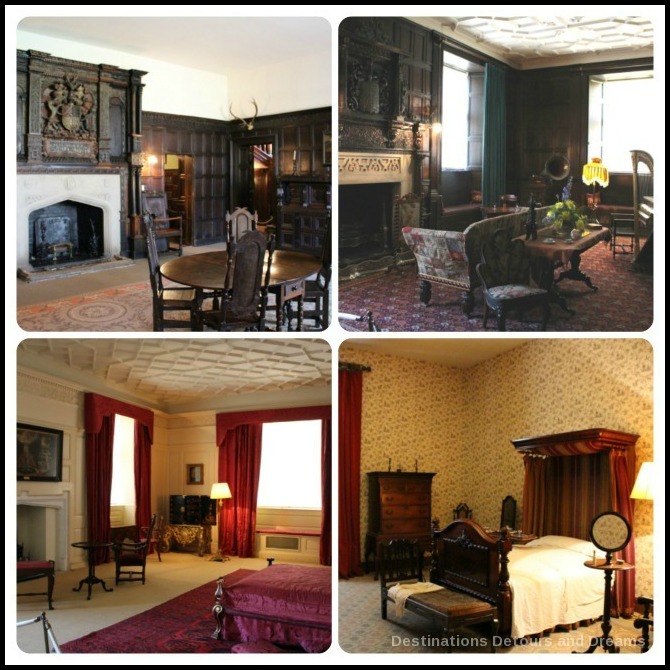
St Fagans National History Museum is located about four miles west of Cardiff City Centre in the village of St. Fagans. Admission is free, although there is a charge for parking. There are picnic areas and a tea room offers light lunches and afternoon tea.
The museum is large and there is a lot to take in. You need to set aside almost a full day to see it. We were there for about four and a half hours. We saw most of the buildings, but not all. If you are in the Cardiff area for more than a few days, I would suggest splitting the visit into two. The grounds behind the visitor centre/entrance split to the right (village area with majority of buildings) and to the left (Castle and Gardens, a few industrial buildings). This makes a nice natural dividing line for splitting the visit into two sections.
If you enjoyed this post, sign up for Destinations Detours and Dreams monthly e-newsletter. Get behind the scenes information and sneak peeks ahead in addition to a recap of the month’s posts.
PIN IT
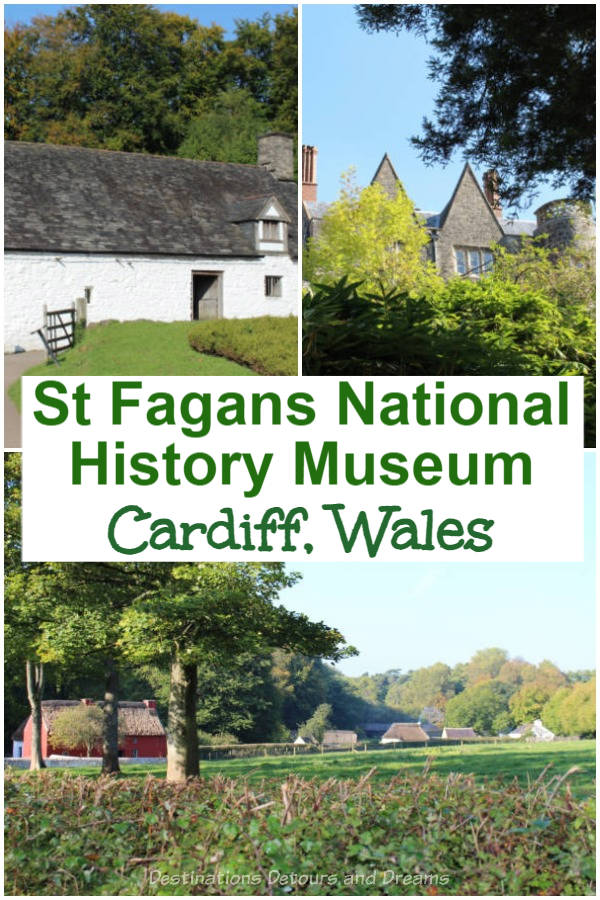

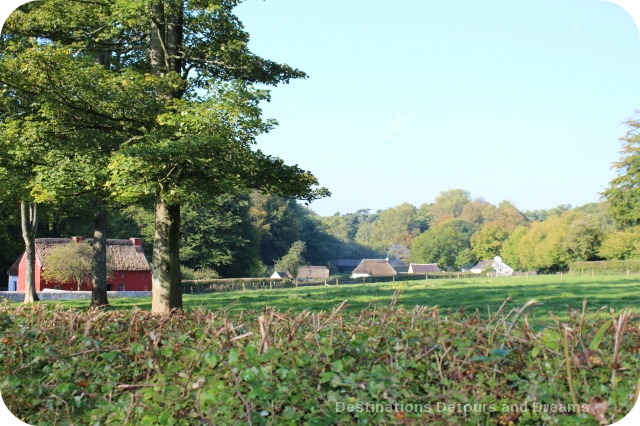
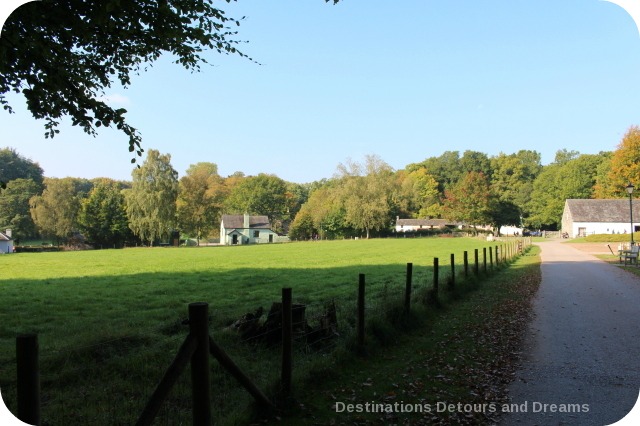
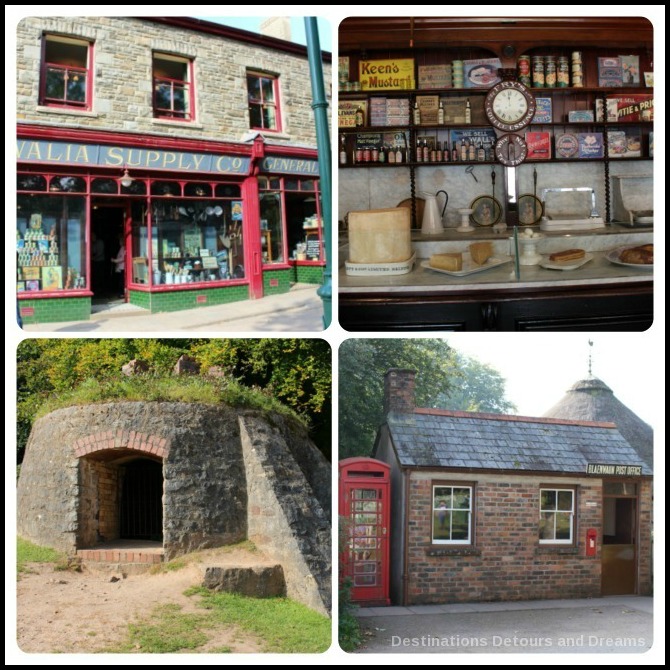
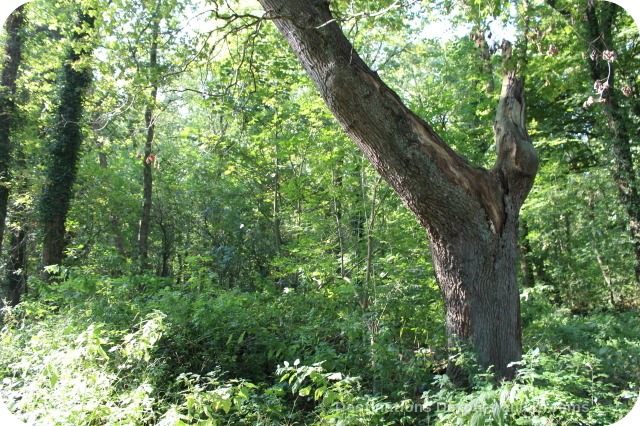
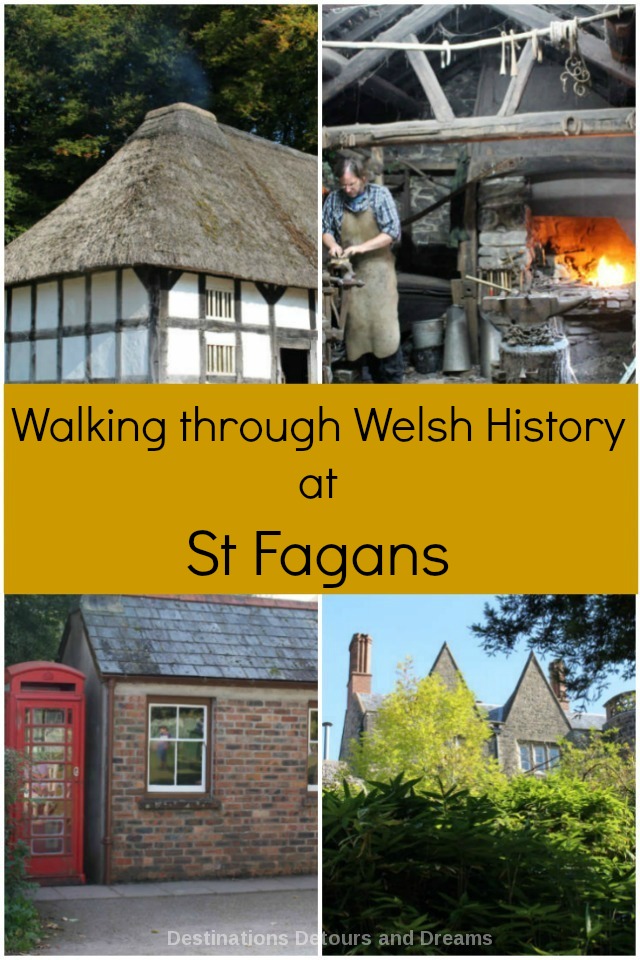
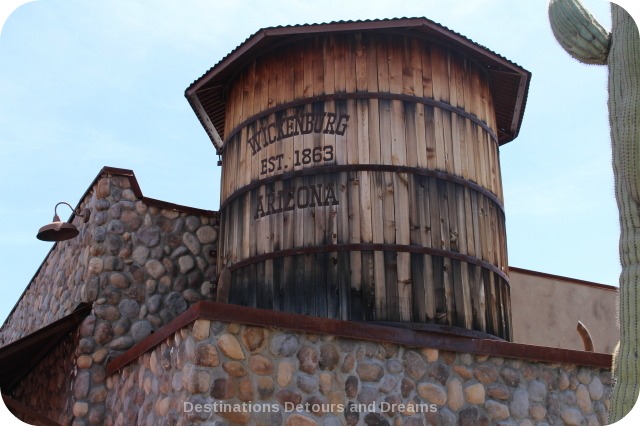
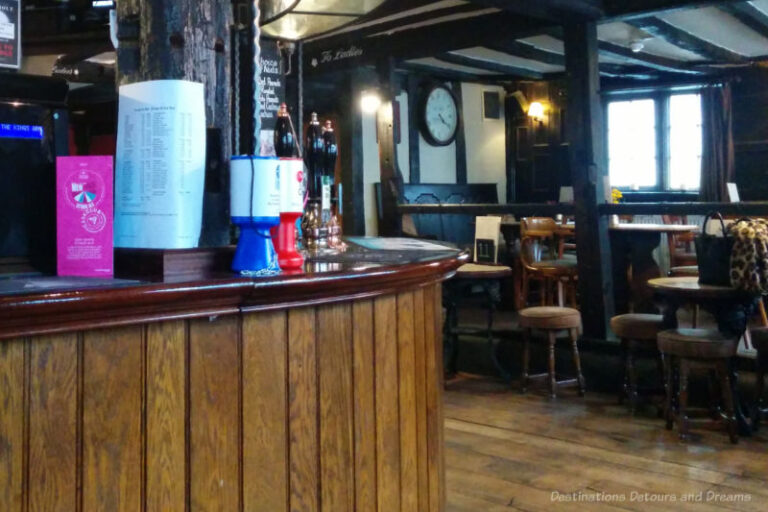
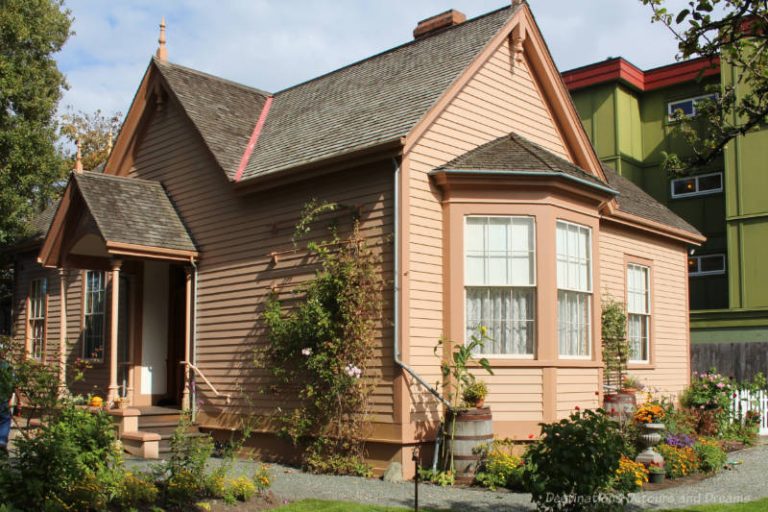
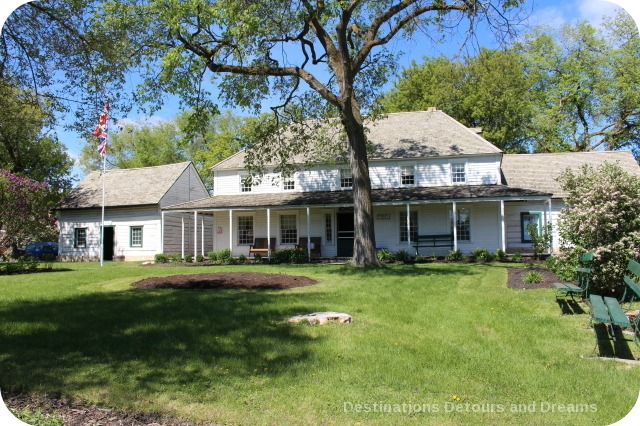
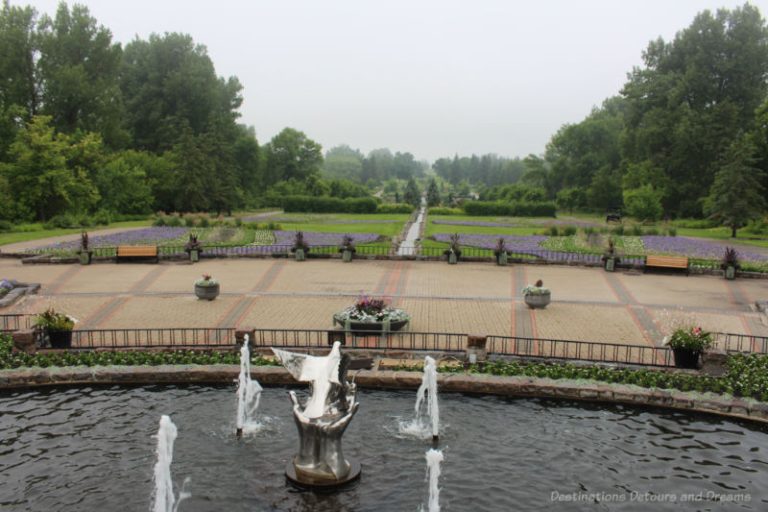
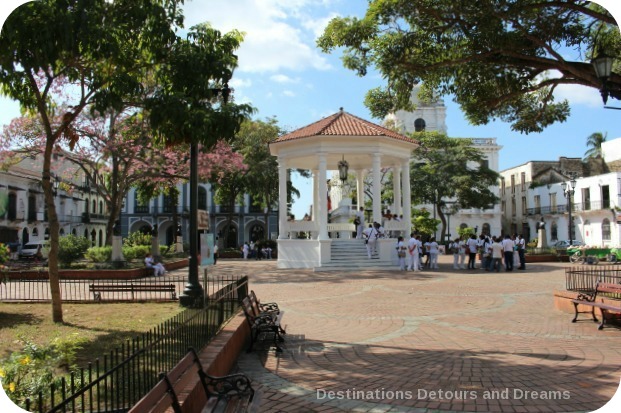
St. Fagans National History Museum looks fascinating and I can see why you would want a whole day to absorb this amazing museum. I love the chance to get a glimpse into how people lived from long ago and even up to the last century as well as the differences between classes. I also enjoyed learning about why the beds were shorter and the butler who ironed Lord Windsor’s newspaper so that he wouldn’t get newsprint on his hands. Great post! Anita
Thanks Anita. It was fascinating to find out bits about the life of the Welsh people over the years.
What lovely buildings! it’s amazing to me they were built so long ago. I am in love with the tudor style homes and the pointed roof lines. Just beautiful. Thanks for sharing these photos.
Thanks Sabrina.
Thank you for another lovely tour – St. Fagans National History Museum is a must not miss, it seems to me. Very interesting explanation as to the bed size and their sleeping upright. It actually does make more sense, and something I bought a bed to accommodate for myself! Laugh! But the sheer size of this outdoor museum is truly awesome.
Jacquie, I’d read about the museum before I visited and I was still blown away by the size. I certainly recommend this as a place to see in the Cardiff area.
Wow, they’ve done a marvellous job of recreating Abernodwydd Farmhouse and the rest of the property. It’s quite big and I’m not sure I’d like to be the blacksmith. Pretty dirty job!
Janice, the restorations are very good. And yes, the museum is big.
I love those thatch-roofed farm homes. I was so excited to see some of them on the road and always stopped to take pictures but in St. Fagans it looks like there were many. Too bad our foray into Wales did not take us further down into Cardiff. I also can’t imagine that the people lived on one side and the cattle on the other. I wonder what the smell was like. Everything was restored so well, must have been an engrossing visit,
Carol, I like the thatched roofs too. I don’t know what the smell would have been like in the longhouse. There is a centre hall dividing the two halves but whether that would be enough to separate the smell I don’t know. Long houses could be found in other parts of Europe. They weren’t particularly common on the Canadian prairies but there were some, built mostly by settlers used to that kind of dwelling. I have a pencil drawing of one that would have been the original homestead of my great-grandparents in the 1880s.
St. Fagans National History Museum looks awesome, but then I love history! The photos are great. The one with the stable on one side and the family on the other…were they literally in the same building with the animals with just that hall in between? Not sure how that would have smelled. Lol. Things were a lot different then.
Susan, lots of history at this place. I too am not sure of the smell in the building housing both animals and people, but on farms you probably can’t completely escape animal smells even if they are in a barn across the yard.
I’m interested now and will be visiting Cardiff in late August, so hope to stop by. Thanks for the tip.
Debi, I’m always reluctant to say something is a “must-see” because there are so many great things to take in around the world and people’s tastes are different, but if I were to do a must-see list for Cardiff, this would be on it. I hope you enjoy your entire Cardiff visit.
I’d love to visit St Fagan’s Castle and the National History Museum. Oh you’ve made me homesick for green and ancient – although I haven’t spent much time in Wales. Time to revisit methinks!
Johanna, this was my first visit to Wales and I thought it was great. Friends told us we were very lucky to have sunny, warm weather the entire time we were there. They’ve had a lot of damp visits.
To me Wales is the land of King Arthur and Merlin and I’d love to visit. Hadn’t heard of St Fagans, but would love to check it out. Looks very interesting.
Billie, St Fagans Museum is certainly worth checking out. We didn’t come across much related to King Arthur in Wales. We’ve actually encountered more related to that legend in England, just to the south and east of Wales.
St. Fagans National History Museum looks lovely and I’ll be in Cardiff soon! I love an open-air museum! And this one looks unusual in that it doesn’t ignore the more modern additions.
Rachel, I hope you get a chance to visit St. Fagans. It is well worth it, in my opinion.
I love going on tour with you Donna. Your descriptions are always so complete and detailed. St. Fagan’s National History Museum is beautifully restored and I loved the thatched roof photos. When I was in Ireland last fall I searched high and low for one and finally succeeded. It’s a dying craft and so nice to see Wales keeping another great example alive.
Thanks Alison. Thatched roofs always make for nice photos, I think.
I’ve just added this to the trip list for my sister and me when we go to Wales this spring! It sounds like a wonderful place to spend a day…or two. Thanks, Donna!
Rose Mary, St. Fagans is definitely worth a visit. Enjoy your trip.
We go here often as a family, beautiful place. I last went when my mother died where we captured a little girl in the background of our photo evidently wearing a 1920’s-1950’s dress .. she certainly wasn’t from this era. Very nice experience and we still have the photos to keep , shame there isn’t enough history to research who that little girl may be. However it is very interesting . Thank you St Fagans for always providing us with a great family day out.
Hi Phoebe. I can see that St Fagans would make a great family day out. I’d certainly visit again and again if I lived near enough to do so.